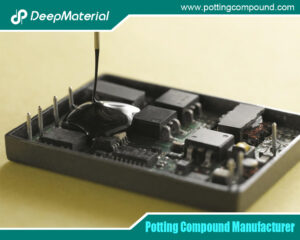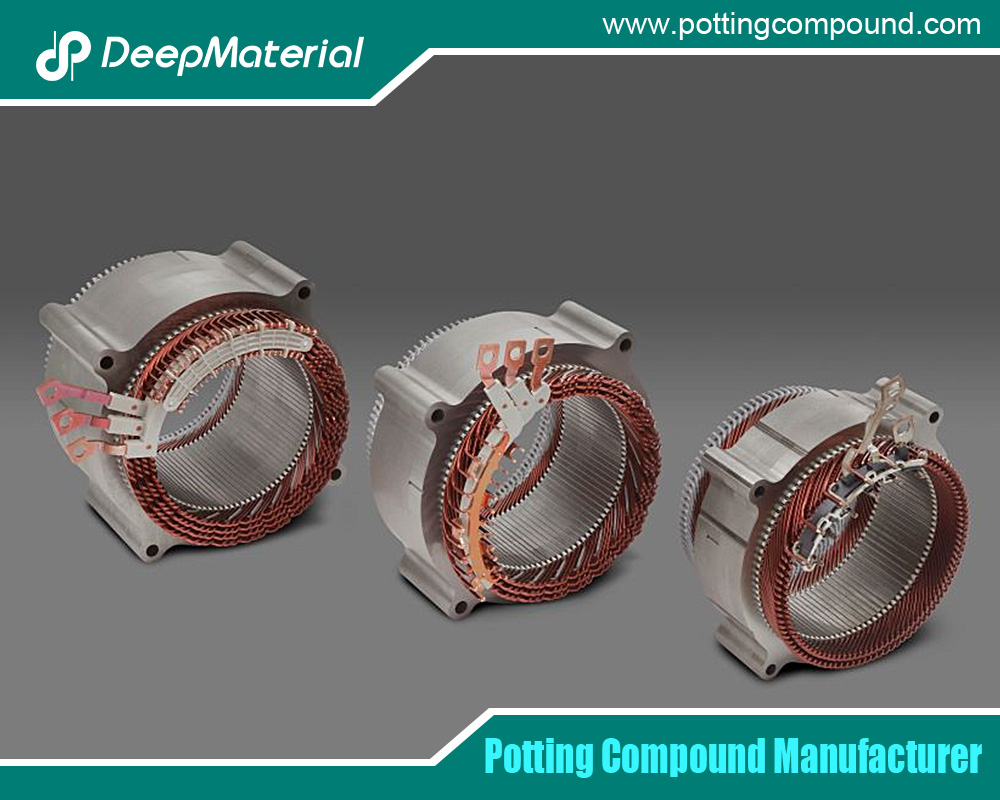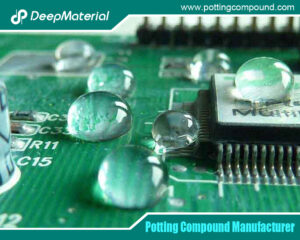
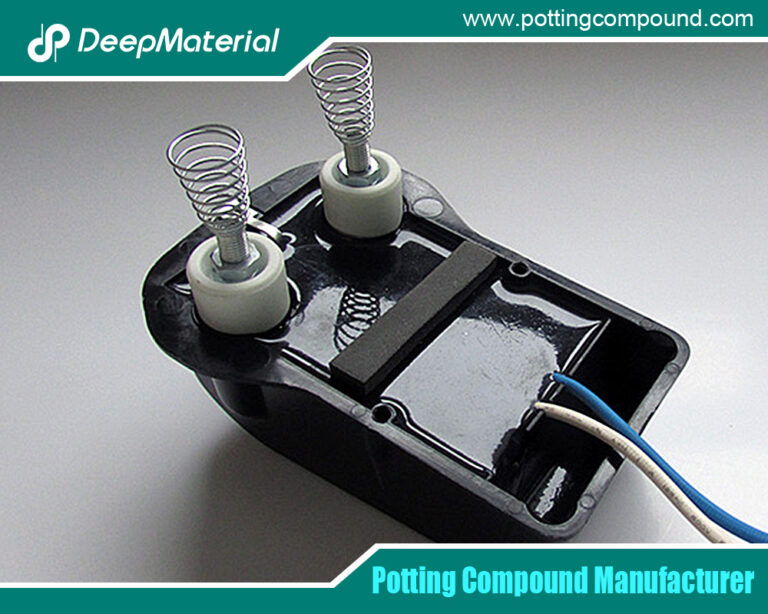
Potting Compound for Electronics: A Comprehensive Guide
- Electronic Potting Material Manufacturer
- September 3, 2024
- circuit board potting compound, Connector Potting Compound, deepmaterial potting compound, electrical potting compound, Electronic Encapsulant Potting Compound, electronic encapsulant potting compounds, Electronic Epoxy Encapsulant Potting Compound, electronic epoxy encapsulant potting compounds, Electronic Epoxy Potting Compound, electronic potting compound, Electronic Potting Compounds Manufacturer, Encapsulant Potting Compound, Encapsulants and Potting Compounds Suppliers, Epoxy Encapsulant Potting Compound, epoxy encapsulant potting compounds, epoxy potting compound, epoxy potting compound manufacturers, Flexible Potting Compound, LED Potting Compound, PCB Potting Compound, polyurethane potting compound, potting compound, potting compound for electronics, Silicone Potting Compound, UV Cure Potting Compound, waterproof potting compound
Potting Compound for Electronics: A Comprehensive Guide
Potting compounds play a crucial role in protecting and enhancing electronic components. These materials, often referred to as encapsulants, provide various benefits, including insulation, protection from environmental hazards, and mechanical support. In this article, we will explore the world of potting compounds for electronics, discussing their types, applications, benefits, and selection criteria.
What is a Potting Compound?
Potting compounds encapsulate electronic components, providing them with a protective layer. These compounds are typically applied in a liquid form, which then hardens to create a solid, durable shell around the components. The primary function of potting compounds is to protect electronic assemblies from moisture, dust, chemicals, and mechanical shock, ensuring the longevity and reliability of the device.
Types of Potting Compounds
Potting compounds come in various types, each with unique properties that make them suitable for specific applications. The most common types of potting compounds include:
Epoxy Potting Compounds
Epoxy resins are among the most widely used potting compounds due to their excellent mechanical strength, chemical resistance, and thermal stability. They offer a solid bond to various substrates, making them ideal for applications requiring durability and protection in harsh environments. Epoxy potting compounds are often used in automotive electronics, industrial controls, and power supplies.
Advantages:
- High mechanical strength
- Excellent chemical resistance
- Good thermal stability
- Strong adhesion to different substrates
Disadvantages:
- Longer curing times
- It may be brittle in some formulations
Polyurethane Potting Compounds
Polyurethane potting compounds are known for their flexibility and toughness. They provide excellent resistance to moisture and are often used in applications where vibration and thermal cycling are concerns. Polyurethane compounds are commonly found in consumer electronics, LED lighting, and automotive applications.
Advantages:
- Flexible and tough
- Good resistance to moisture
- Suitable for vibration-prone environments
- Faster curing times compared to epoxy
Disadvantages:
- Lower chemical resistance compared to epoxy
- It may not be suitable for high-temperature applications
Silicone Potting Compounds
Silicone potting compounds are prized for their exceptional thermal stability and flexibility. They can withstand extreme temperatures and are often used in applications where temperature fluctuations are typical. Silicone compounds are also known for their excellent dielectric properties, making them ideal for high-voltage applications.
Advantages:
- Excellent thermal stability
- High flexibility
- Good dielectric properties
- Resistant to moisture and chemicals
Disadvantages:
- Higher cost compared to other potting compounds
- Longer curing times
Acrylic Potting Compounds
Acrylic potting compounds balance flexibility and hardness, making them suitable for a wide range of applications. They cure quickly and are easy to apply, and they are often used in automotive electronics, sensors, and consumer devices.
Advantages:
- Quick curing times
- Good balance of flexibility and hardness
- UV resistant
- Easy to apply
Disadvantages:
- Lower chemical resistance
- It may not be suitable for high-temperature environments
Applications of Potting Compounds
Potting compounds are used in a variety of applications across different industries. Their ability to protect and enhance electronic components makes them indispensable in the following areas:
Automotive Electronics
Electronic components are exposed to harsh environments in the automotive industry, including extreme temperatures, moisture, and vibration. Potting compounds protect these components, ensuring their reliability and longevity. Applications include engine control units, sensors, and lighting systems.
Consumer Electronics
Potting compounds are commonly used in consumer electronics to protect sensitive components from moisture, dust, and mechanical damage. They are often found in smartphones, tablets, wearable devices, and LED lighting.
Industrial Controls
Industrial environments are often harsh, with exposure to chemicals, moisture, and mechanical stress. Industrial controls use potting compounds to protect sensitive electronics from these hazards, ensuring continuous operation and reducing downtime.
Medical Devices
Medical devices require high levels of reliability and protection. Potting compounds are used in medical electronics to protect components from moisture, sterilization processes, and mechanical shock. Applications include imaging equipment, diagnostic devices, and patient monitoring systems.
Aerospace and Defense
Electronic components in aerospace and defense applications are subjected to extreme conditions, including high temperatures, vibration, and radiation. Potting compounds provide the necessary protection, ensuring the functionality and reliability of mission-critical systems.
Benefits of Using Potting Compounds
Potting compounds in electronics offer several benefits, making them essential to modern electronic design and manufacturing. These benefits include:
Environmental Protection
Potting compounds provide a robust barrier against environmental factors such as moisture, dust, chemicals, and temperature fluctuations. This protection is crucial in ensuring the longevity and reliability of electronic components, especially in harsh environments.
Mechanical Support
Potting compounds offer mechanical support to electronic components, protecting them from physical damage due to vibration, shock, or impact. This support is critical in applications where the electronics are constantly moving or stressed.
Electrical Insulation
One of the primary functions of potting compounds is to provide electrical insulation. By encapsulating the components, potting compounds prevent short circuits and electrical failures, ensuring the safe operation of the device.
Thermal Management
Certain potting compounds, such as silicone and epoxy, have excellent thermal conductivity, helping to dissipate heat generated by electronic components. This thermal management is essential in preventing overheating and ensuring the efficient operation of the device.
Improved Reliability
Potting compounds significantly improve electronic device reliability by providing protection against environmental factors, mechanical stress, and electrical failures. Increased reliability translates to fewer failures, reduced maintenance, and longer service life.
Selecting the Right Potting Compound
Choosing the suitable potting compound for your application is critical to achieving the desired level of protection and performance. Several factors must be considered when selecting a potting compound, including:
Operating Environment
The operating environment plays a significant role in determining the type of potting compound to use. Factors such as temperature range, humidity, chemical exposure, and mechanical stress must be considered when selecting a compound.
- Temperature Range:Silicone or epoxy compounds are recommended for high-temperature environments due to their thermal stability.
- Humidity:Polyurethane compounds are ideal for applications where moisture resistance is a priority.
- Chemical Exposure:Epoxy compounds offer excellent chemical resistance and are suitable for harsh chemical environments.
Mechanical Properties
The potting compound’s mechanical properties, such as hardness, flexibility, and tensile strength, must match the application’s requirements.
- Hardness:For applications requiring rigid protection, epoxy compounds are ideal.
- Flexibility:Polyurethane and silicone compounds offer flexibility, making them suitable for vibration or thermal cycling applications.
Electrical Properties
The electrical properties of the potting compound, such as dielectric strength and insulation resistance, are crucial for applications involving high voltages or sensitive electronics.
- Dielectric Strength:Silicone compounds are known for their excellent dielectric properties, making them suitable for high-voltage applications.
- Insulation Resistance:Epoxy compounds provide strong insulation, preventing electrical failures.
Curing Time
The curing time of the potting compound can impact the production process. Depending on the application, a faster or slower curing time may be preferred.
- Fast Curing:Acrylic and polyurethane compounds cure quickly, making them suitable for high-volume production.
- Slow Curing:Epoxy and silicone compounds may require longer curing times, which may be necessary for specific applications with a stronger bond.
Cost Considerations
Cost is always a factor when selecting materials. While higher-quality potting compounds may offer better performance, they also come at a higher cost. It is essential to balance performance requirements with budget constraints.
Application Process for Potting Compounds
The application process for potting compounds is a critical step in ensuring the protection and performance of electronic components. The process typically involves the following steps:
Preparation
Before applying the potting compound, the electronic components and housing must be thoroughly cleaned to remove contaminants, such as dust, oils, or moisture. Proper cleaning ensures good adhesion and prevents potential issues such as bubbles or voids.
Mixing
If the potting compound is a two-part system (e.g., epoxy or polyurethane), the components must be mixed thoroughly according to the manufacturer’s instructions. Accurate mixing is essential to ensure the compound cures properly and achieves the desired properties.
Dispensing
The mixed potting compound is then dispensed into the electronic assembly using a syringe, dispenser, or automated equipment. The dispensing process should be done carefully to avoid air bubbles or voids, which can compromise the potting compound’s protection and performance.
Curing
After dispensing, the potting compound must be cured according to the manufacturer’s recommendations. Depending on the type of compound used, curing can be done at room temperature or with heat. Proper curing ensures the compound has complete mechanical, thermal, and electrical properties.
Inspection
Once the potting compound has fully cured, the assembly should be inspected for defects, such as air bubbles, voids, or incomplete coverage. Any issues should be addressed promptly to ensure the protection and performance of the electronic components.
Challenges in Potting Electronics
While potting compounds offer numerous benefits, there are challenges associated with their use in electronic applications. Some of the common challenges include:
Air Bubbles and Voids
Air bubbles and voids can form during the dispensing or curing process, compromising the protection and performance of the potting compound. To minimize these issues, careful mixing, dispensing, and curing techniques are necessary.
Shrinkage
Some potting compounds, precise epoxy formulations, may shrink during curing. Shrinkage can lead to mechanical stress on the components, potentially causing damage or affecting performance. Selecting a low-shrinkage compound and following proper curing procedures can help mitigate this issue.
Thermal Expansion Mismatch
Differences in thermal expansion between the potting compound and the electronic components can lead to stress and potential failure, especially in applications with significant temperature fluctuations. Selecting a potting compound with a compatible coefficient of thermal expansion (CTE) is essential to avoid these issues.
Compatibility with Components
Not all potting compounds are compatible with every electronic component or substrate type. It is crucial to ensure that the selected compound does not react negatively with the materials used in the assembly, such as corroding metals or degrading plastics.
Removal and Rework
Once a potting compound has cured, removing it can be challenging or impossible, making rework or repair difficult. In applications where rework is anticipated, selecting a compound that allows for easier removal, such as a silicone-based compound, may be beneficial.
Innovations and Future Trends in Potting Compounds
The field of potting compounds for electronics is continually evolving, driven by the need for improved performance, environmental sustainability, and compatibility with emerging technologies. Some of the current trends and innovations include:
Environmentally Friendly Compounds
As environmental concerns grow, there is an increasing demand for potting compounds less harmful to the environment. This includes the development of bio-based resins and compounds with reduced volatile organic compounds (VOCs).
Advanced Thermal Management
With the rise of high-power electronics, such as electric vehicles and renewable energy systems, there is a growing need for potting compounds with advanced thermal management properties. Innovations in thermally conductive materials are helping to meet this demand.
Smart Potting Compounds
Researchers are exploring the development of “smart” potting compounds that can monitor electronic components in real-time. These compounds could include sensors that detect changes in temperature, moisture, or other environmental factors, allowing for proactive maintenance and failure prevention.
Nanotechnology
Incorporating nanomaterials into potting compounds is an emerging trend that offers the potential for enhanced mechanical, thermal, and electrical properties. Nanotechnology could lead to developing potting compounds with superior performance characteristics, such as increased thermal conductivity or improved dielectric strength.
Conclusion
Potting compounds for electronics are an essential component in the protection and performance of modern electronic devices. With a wide range of materials available, including epoxy, polyurethane, silicone, and acrylic, it is possible to find a suitable compound for almost any application. Manufacturers and engineers can ensure their electronic assemblies’ longevity, reliability, and efficiency by understanding the properties, applications, and selection criteria for potting compounds. As technology continues to evolve, so will the materials and methods used in potting, leading to even more significant innovations and advancements in electronic protection.
For more about choosing the top potting compound for electronics: a comprehensive guide, you can pay a visit to DeepMaterial at https://www.pottingcompound.com/ for more info.
Recent Posts
- Electronic Encapsulation Technology to Enhance the Durability of Automotive Electronics
- The Unsung Guardian: Why Silicone Potting Compound is Widely Used in the Electronics Industry
- The Development Trend and Future Prospects of Electrical Potting Compound in the Glue Industry
- The Conformal Coating for PCB Market Has Entered an Explosive Period: Key Drivers and Reports Detailed
- How Does Epoxy Encapsulated LED Work?
- Which Glues Are Suitable for Encapsulation of Electronic Products?
- What Are the Design Standards for the Glass Transition Temperature (Tg) and Tensile Modulus of Automotive Electronic Encapsulants Adhesives?
- Usage Methods of LED Potting Compounds: From Mixing to Curing – A Complete Step-by-Step Guide
- The Characteristics of Thermal Conductivity, Waterproofness and Shock Resistance of LED Potting Compounds
- Revealing the Wide Range of Application Scenarios of LED Potting Compounds
Tags
Related Posts

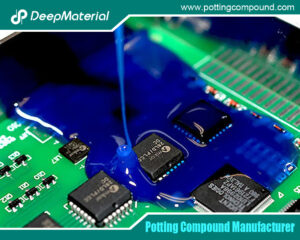
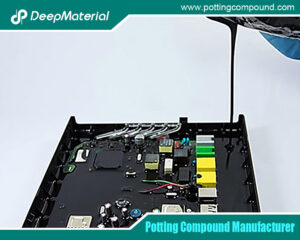
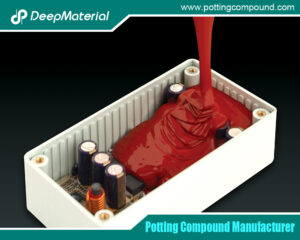
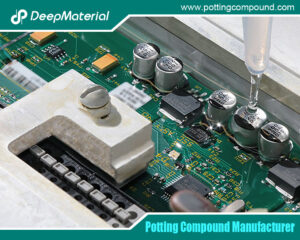
How Does Epoxy Encapsulated LED Work?
